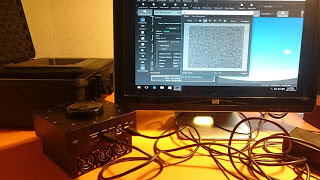Now that all of the components for Insight Observatory's remote Astronomical Telescope for Educational Outreach (ATEO) have been acquired, our organization has officially launched a fundraising effort to cover the cost of hosting and maintenance of the telescope.
Read More
The instrument is slated for installation at the SkyPi Online Observatory located in New Mexico in 2017. Once up and running at the remote hosting site Insight Observatory will be assessed a monthly fee that will cover the hosting and maintenance. This is where we need help. If we want to accomplish our goals of bringing the universe into the classroom it is essential to call upon the generosity of those who are willing to pledge their support to keep the ATEO operational.
Fundraising is being accomplished through Patreon, a crowdfunding platform ideally suited for organizations like ours. By supporting Insight Observatory via Patreon you not only provide much-needed funds, but your generosity is also amply rewarded. Depending on how much you choose to give you can receive rewards ranging from recognition on our website to accessing our image database to actual reservation time on the telescope itself. Please visit our Patreon page for more information and details on how to become a patron of Insight Observatory's remote Astronomical Telescope for Educational Outreach.
 |
| Students Studying Astronomy Online. |
Fundraising is being accomplished through Patreon, a crowdfunding platform ideally suited for organizations like ours. By supporting Insight Observatory via Patreon you not only provide much-needed funds, but your generosity is also amply rewarded. Depending on how much you choose to give you can receive rewards ranging from recognition on our website to accessing our image database to actual reservation time on the telescope itself. Please visit our Patreon page for more information and details on how to become a patron of Insight Observatory's remote Astronomical Telescope for Educational Outreach.





